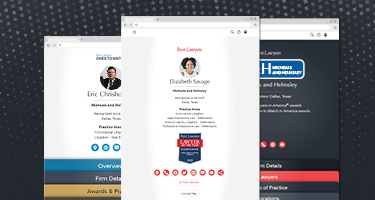Key takeaways
- On 18 June 2022, the Veterinary Practice Act 2021 (Act) commenced and the newly appointed members of the Veterinary Practice Board (Board) started their term of office.
- The Act provides for the regulation of the practice of veterinary medicine in Western Australia and seeks to facilitate the regulation of the practice of veterinary medicine on a national basis.
- Western Australian based veterinarians and veterinary nurses should make themselves familiar with this new legislation.
Background
Some of the key changes brought in by the Act are summarised below.
The Board
Previously, the Board consisted of five members. Under the Act, the Board now consists of eight members appointed by the Minister for Regional Development, Agriculture and Food.
Of the Board members:
- three must be WA veterinarians
- one must be a WA veterinarian who is elected by WA veterinarians
- one must be a veterinary nurse who is elected by veterinary nurses
- one must be a person who is both a WA veterinarian and an officer of the department of the Public Service principally assisting in the administration of the Biosecurity and Agriculture Management Act 2007
- one must be a person who has knowledge of and experience in representing the interests of consumers, and
- one must be a legal practitioner.
A Board member holds office for a term not exceeding three years and is eligible for reappointment.[1]
Impairment
The Act provides the Board with powers to deal with impairment issues, such as substance abuse or dependence and mental or physical impairment, separate to complaints and discipline.[2] Previously, the Board had no powers in relation to practitioners who were suffering (or may be suffering) from impairments.
The Act defines an impairment, in relation to a person, as ‘a physical or mental impairment, disability, condition or disorder (including substance abuse or dependence) that detrimentally affects or is likely to detrimentally affect the person’s capacity to practise veterinary medicine or veterinary nursing’.
As soon as practicable after assessing a notification for a potential impairment, the Board must deal with the notification by:
- requiring the practitioner to undergo a health assessment, or
- deciding to take no further action in relation to the notification.[3]
If the Board requires a veterinary practitioner to undergo a health assessment, the Board must appoint an assessor to conduct the assessment. The assessor must be a medical practitioner or psychologist who is required to produce a written report about the assessment to the Board. The assessor’s fees are payable by the Board.
The practitioner is entitled to a copy of the assessor’s report unless the assessor considers that the assessment material includes information that may be prejudicial to the practitioner’s physical or mental health or wellbeing.
If the assessment material is critical of the practitioner’s fitness to practise veterinary medicine, or as a veterinary nurse, or expresses the view that the practitioner has an impairment, the Board will arrange a discussion with the practitioner about the assessment material.
The Board may subsequently decide to take any action necessary or appropriate, including the following:
- refuse the practitioner’s application for registration, or renewal of registration
- impose conditions on the practitioner’s registration
- make an immediate action order in relation to the practitioner
- determine to deal with the matter as if it were the subject of a complaint, or
- take no further action in relation to the matter.[4]
Immediate Action
The Act enables the Board to take immediate action in circumstances where the Board is satisfied that a practitioner poses an imminent risk of substantial injury or harm to a person (including the practitioner) or animal.[5] The previous legislation afforded the Board with no immediate action powers.
Under these provisions, the Board is able to impose a condition on a practitioner’s registration, modify an existing condition on a registration or suspend the registration of a practitioner. The maximum length of a suspension by way of immediate action is 28 days.
Complaints process
A key change brought in by the Act is the Board’s ability to independently deal with matters involving ‘unprofessional conduct’, thereby only having to refer more serious cases involving ‘professional misconduct’ to the Tribunal. This is a significant shift noting that, previously, all disciplinary matters were required to be referred to the Tribunal.
The Board must assess each complaint as soon as practicable after it is made and deal with the complaint in one of the following ways:
- dismiss the complaint
- if the complaint appears to be about ‘unprofessional conduct’, deal with the complaint under Division 5 of the Act (discussed below)
- refer the complaint to the State Administrative Tribunal (Tribunal) if:
- the complaint appears to be about ‘professional misconduct’, or
- in the opinion of the Board, the Tribunal could more appropriately deal with the complaint, or
- refer the complaint:
- to an interstate regulatory authority to be dealt with under a corresponding law, if the conduct is conduct that may be dealt with by that body, or
- to another person or body that, in the opinion of the Board, could more appropriately deal with the complaint.
Complaints about ‘unprofessional conduct’
‘Unprofessional conduct’ is defined to include doing, or omitting to do, something in connection with the practice of veterinary medicine in a manner, or to an extent, that falls short of the standard of competence, diligence and safety that a member of the public is entitled to expect of a reasonably competent veterinarian or veterinary nurse.
At the end of an inquiry, the Board must decide to deal with the complaint in one of the following ways:
- dismiss the complaint
- make a finding of ‘unprofessional conduct’ against the practitioner, or
- refer the complaint to the Tribunal if the Board considers that the practitioner may have engaged in ‘professional misconduct’.[6]
If a practitioner is found to have engaged in ‘unprofessional conduct’, the Board may do one or more of the following:
- reprimand the practitioner
- fine the practitioner, or
- impose or modify existing conditions on the practitioner’s registration.[7]
Examples of conditions that can be placed on a practitioner’s registration are as follows:
- a condition requiring the practitioner to complete a specified course of relevant education,;
- a condition requiring the practitioner to undertake a specified period of practice or work under specified supervision
- a condition requiring the practitioner to do or refrain from doing something in connection with veterinary medicine
- a condition requiring the practitioner to undergo specified counselling or medical treatment or act in accordance with specified medical advice concerning the practitioner
- a condition requiring that the practice by the practitioner of veterinary medicine, or the practitioner’s veterinary practice business:
- be conducted for a specified period in a specified way or subject to specified conditions, or
- be subject to periodic inspection for a specified period.[8]
If an adverse finding or order is made against a practitioner in relation to unprofessional conduct, the Board is able to recover its costs.[9]
Complaints about ‘professional misconduct’
As noted above, the Board must refer a complaint to the Tribunal if the complaint appears to be about ‘professional misconduct’; or in the opinion of the Board, the Tribunal could more appropriately deal with the complaint. [10]
‘Professional misconduct’, is defined to include:
- unprofessional conduct if the conduct involves a substantial or consistent failure to reach or maintain a reasonable standard of competence, diligence and safety, and
- conduct, whether occurring in connection with the practice of veterinary medicine or not, that is inconsistent with a person being a fit and proper person to hold registration as a WA veterinarian or veterinary nurse.
The Tribunal may deal with such a complaint in one of the following ways —
- dismiss the complaint
- make a finding of unprofessional conduct against the practitioner, or
- make a finding of professional misconduct against the practitioner.[11]
If the Tribunal finds the practitioner to have engaged in professional misconduct, the Tribunal may do one or more of the following:
- reprimand the practitioner
- fine the practitioner
- impose a condition on the practitioner’s registration, or
- modify an existing condition on the practitioner’s registration, or
- suspend the practitioner, or
- cancel the practitioner’s registration, or
- disqualify the practitioner.[12]
Implications
Veterinarians and veterinary nurses should familiarise themselves with the provisions of the Act and the impact it will have on the Board’s ability to manage complaints and investigations.
Meridian Lawyers regularly advises veterinarians and veterinary nurses to assist them to understand the legislation and professional codes governing their obligations. If you would like further details about the recent updates to the Veterinary Practice Act 2021, please contact Shannon Mony.
Disclaimer: This information is current as of August 2022. This article does not constitute legal advice and does not give rise to any solicitor/client relationship between Meridian Lawyers and the reader. Professional legal advice should be sought before acting or relying upon the content of this article.
















